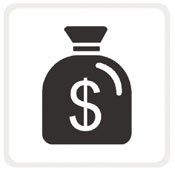100% Plus Financing Available
The American Recovery and Reinvestment Act of 2009, passed early this year, provides up to an $8,000 tax credit for first time home buyers. The tax credit refund would be given to the home buyer after filing the 2008 or 2009 tax return.
It was only a matter of time before someone would realize that this tax credit was not helping the prospective FHA home buyers who had difficulty raising the required down payment of 3.5% for an FHA purchase. The solution seemed obvious – let the home buyer receive the tax credit money upfront to be used for the down payment.
Last week, use of the tax credit for a down payment was officially endorsed by Shaun Donovan, secretary of the U.S. Department of Housing and Urban Development (HUD). Mr. Donovan stated that “We all want to enable FHA consumers to access the home buyer tax credit funds when they close on their home loans so that the cash can be used as a down payment”. Mr. Donovan noted that this is one of the ways that the government is working to “stabilize” the housing market.
Mr. Donovan’s plan may actually do more than just stabilize housing – it may set off a buying stampede, multiple offers and bidding wars at the lower end of the housing market. Consider the following example of a home purchase using FHA guidelines and the $8,000 home buyer tax credit.
Loan Scenario
On the purchase of a home priced at $80,000 the buyer needs the FHA required down payment of 3.5% ($2,800). In addition to the down payment, the home buyer needs money for closing costs and prepaid items, which could easily amount to 6% of the property’s purchase price ($4,800). The FHA also charges an upfront mortgage insurance premium of 1.75% ($1,400). The total amount theoretically needed by the purchaser totals $9,000.
In the real world here’s how this deal will be structured:
- Down payment of $2,800 covered by tax credit – cost to purchaser – ZERO
- Closing costs and prepaid items of $4,800 can and usually are worked into the purchase price since the FHA allows up to a 6% seller concession – cost to purchaser – ZERO
- Mortgage Insurance Premium of $1,400 is added to the purchaser’s loan amount and financed by the FHA – cost to purchaser – ZERO
- Total cash out of pocket by purchaser – ZERO
- Cash due to purchaser for unused portion of tax credit – $5,200 – enough to easily cover a couple of weeks vacation in Vegas.
- Based on the FHA’s default rate, approximately 15% of the new home buyers will default shortly after closing. Considering foreclosure freezes and loan modification attempts, many purchasers can look forward to enjoying payment free housing for 2 to 3 years.
Program Benefits/Limitations
Benefits for FHA home purchaser: Zero cash outlay to own a home, FHA financing provided at an all time low interest rate, $5,200 cash bonus to purchaser, plus a free long term call on the price of housing. With these types of buyer incentives, expect to see an increase in home purchases by the first time home buyer.
Higher incomes groups excluded: For single taxpayers with an adjusted gross income over $75,000 and for married couples with income over $150,000, the tax credit is reduced or eliminated.


 deploying their TARP funds to provide low rate financing for new home buyers. The program was limited in time and funding allocation as detailed below:
deploying their TARP funds to provide low rate financing for new home buyers. The program was limited in time and funding allocation as detailed below:
 Low Rates But Large Fees
Low Rates But Large Fees The Limitation of Low Rates
The Limitation of Low Rates